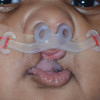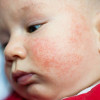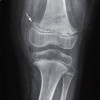
 IJCP Editorial Team
IJCP Editorial Team
Arthritis: A Common Joint Disorder
"Arthritis"
means joint inflammation or the swelling and tenderness of one or more joints.
It is caused by the breakdown of cartilage in the joints, leading to the bones
rubbing against each other, causing joint pain, swelling, and stiffness. It can
occur in any joint but is most commonly found in the hands, wrists, feet,
ankles, and hips. There are many types of arthritis. Common ones include the
following-
- Ankylosing spondylitis- causes inflammation in the joints and ligaments of the spine.
- Gout- occurs as flares, typically in the big toe or a lower limb.
- Juvenile idiopathic arthritis- represents the most common type of chronic arthritis that
affects children.
- Osteoarthritis- represents the most common type of arthritis, particularly in
older people.
- Psoriatic arthritis- mainly occurs in people with psoriasis (scaly red and white
skin patches) and involves the skin, joints, and areas where tissues
adhere to the bone.
- Reactive arthritis- occurs due to an infection in the body. Symptoms often
resolve on their own within a few weeks or months.
- Rheumatoid arthritis- represents an autoimmune type of arthritis where the
immune system attacks the healthy joint tissues.
Symptoms
and Risk Factors Associated with Arthritis
A
person with arthritis may experience different symptoms depending upon the type
of manifestation. However, the most common sign and symptoms of arthritis
include the following:
- Joint pain and stiffness that is worse in the
morning or after long periods of inactivity
- Warmth and redness around the affected joint
- Swelling
- Decreased range of motion.
Other
symptoms may include fatigue, loss of appetite, weight loss, and muscle
weakness.
Risk
factors for developing arthritis include age, family history, obesity, prior
joint injury, and certain medical conditions. Additionally, gender may play a
role in developing some forms of arthritis, as some types are more common in
women than men.
- Family history – Genetics can trigger some types of arthritis.
- Age – Ageing is a risk factor for osteoarthritis, rheumatoid arthritis,
and gout.
- Gender- Women are more likely to develop rheumatoid arthritis, while
men are more prone to gout.
- Previous joint injury- Injury in a joint, perhaps while playing a sport, boosts the
chances of developing arthritis in that joint.
- Obesity – Excessive body weight puts stress on joints, particularly
knees, hips, and spine, and increases the risk of developing arthritis.
Complications - Severe arthritis can interfere with daily tasks, mainly
if it affects the hands or arms. In some cases, joints may slowly alter their
alignment and shape. Arthritis of weight-bearing joints can refrain from
walking comfortably or sitting up straight.
Diagnosis Procedures to Detect Arthritis
Diagnosis
of arthritis typically involves a physical examination, patient and family
history, laboratory tests, and imaging tests.
- Physical Examination - During the physical examination for arthritis, doctors
check the joints for swelling, redness, and warmth. They'll also review
the movement of the joints.
- Laboratory investigations - Analyzing various body fluids can help determine the type of
arthritis. Fluids commonly analyzed are blood, urine, and joint fluid. To
collect a sample of joint fluid, doctors cleanse and numb the area before
placing a needle into the joint space to draw out some fluid.
- Imaging - Imaging modalities assist in detecting the problems within the
joint that may be causing the symptoms. Examples include:
o X-rays- They
reveal cartilage loss, bone destruction, and bone spurs. X-rays may not show
early arthritic damage but can track the progression of the disease.
o Computerized tomography (CT)- They create cross-sectional views of internal
structures and help visualize bone and the surrounding soft tissues.
o Magnetic resonance imaging (MRI)- It produces more precise cross-sectional images of
soft tissues like cartilage, tendons, and ligaments.
o Ultrasound- It images
soft tissues, cartilage, and fluid-containing structures near the joints
(bursae). Also, it helps direct needle placement for drawing joint fluid or
injecting drugs into the joint.
Treatment for Arthritis
Treatments
for arthritis vary depending on the type of arthritis. The therapy aims to
reduce the symptoms and improve the quality of life. The physician may try
several treatments or combinations of treatments before determining what works
best for an individual. The treatment modalities for managing arthritis
include-
·
Medications
-
o Nonsteroidal anti-inflammatory drugs (NSAIDs) for relieving
pain and inflammation;
o Counterirritants for applying topically over the skin
to relieve pain;
o Steroids for relieving inflammation, pain, and slow
joint damage;
o Disease-modifying antirheumatic drugs (DMARDs) decline
the progression of rheumatoid arthritis and protect the joints and other
tissues from permanent damage.
·
Physical
therapy- can help in some types of arthritis. Joints can be strengthened, and
their range of motion can be improved by exercise. However, some cases may
demand splints or braces.
·
Surgery-
It may be recommended when conservative measures fail and include-
o Joint repair that smoothes
or realigns the joint surfaces to reduce pain and improve function;
o A joint replacement that
removes the damaged joint and replaces it with an artificial one (majorly
performed in hips and knees);
o Joint fusion is
employed in smaller joints, like those in the wrist, ankle, and fingers.
Tips for Maintaining Joint Health
Getting
enough physical activity helps to prevent or slow joint disorders. Exercise
strengthens the muscles around the joints and allows them to perform better.
While
playing sports, wearing the right equipment to protect the joints, such as knee
pads, is essential. If the joint problems have already started, ask your
provider what activities are best for you.
The Bottom Line
Arthritis
is now becoming a common problem due to the changing lifestyle. Staying active
and performing muscle-strengthening exercises to maintain quality of life is
crucial. If you experience any joint symptoms, don't hesitate to visit the
physician immediately. Early diagnosis can prevent further damage to the bone.

IJCP Editorial Team
Comprising seasoned professionals and experts from the medical field, the IJCP editorial team is dedicated to delivering timely and accurate content and thriving to provide attention-grabbing information for the readers. What sets them apart are their diverse expertise, spanning academia, research, and clinical practice, and their dedication to upholding the highest standards of quality and integrity. With a wealth of experience and a commitment to excellence, the IJCP editorial team strives to provide valuable perspectives, the latest trends, and in-depth analyses across various medical domains, all in a way that keeps you interested and engaged.









Please login to comment on this article